Review: Alcatel OneTouch Idol 3
Media
Since the Idol 3 runs stock Android and isn't branded by any carriers, the phone is blessedly free of the bloaty, spend-money-on-me media apps common to other handsets. Google's suite of Play-branded apps form the core media experience on the phone. The Idol 3 has the same versions of these apps that are available to every other Android handset. YouTube is there, as well.
There are a few extras. The Idol 3 offers an FM radio (as is typical, headphones are required, which is a shame given the awesome speakers), and a separate music app called Mix. At first, Mix masquerades as a mild-mannered, bare-bones MP3 app for side-loaded music, but it's got a secret turntable for playing DJ on the phone. The turntable function lets you do many of the things you'd expect from a third-party DJ app, such as mix tunes, add scratches and other effects, create and manage play lists, and generally just have fun. If you want to use it like any boring old MP3 player you can, but it's much more fun to Mix it up.
The only way to share media from the Idol 3 to other devices is Google's Chromecast technology. In order to push music, photos, and movies to your TV you need to buy Google's $35 HDMI dongle first. Without the Chromecast hardware, you can't share with other devices at all.
Camera
The Idol 3 is one of a few Android smartphones to rely on the Android 5.0 camera app, but it is a slightly modified version thereof. Since the Idol 3 doesn't have a dedicated camera button, you need to open the camera from the lock screen or the menus. It opens relatively quickly.
The basic shooting screen includes three shooting tools on the left side and the shutter controls on the right. The tools on the left are user-facing camera, flash toggle, and camera menu. If you press the camera menu button a nice tray slides out across the bottom of the screen. This is where you need to go to change between the Idol 3's various shooting modes. You can also access this tray by swiping up from the bottom of the screen.
The Idol 3 has auto, HDR, pano, manual, timelapse, a QR code scanner (again with this?), and face beauty shooting modes. The only want to exert control over settings such as white balance, exposure, or color is to select the manual shooting mode. The face beauty mode applies some instant makeup to smooth over your face's rough edges. You can adjust the severity of these effects if you want.
The default setting is 10 megapixels with the sensor cropped in a 16:9 aspect ratio. If you want to use all 13 megapixels you need to adjust the phone to the 4:3 aspect ratio.
Thankfully I didn't see any performance issues with the camera. It opened quickly and everything about its behavior was fast and smooth. It focuses very quickly and snaps off photos in a blink. Oddly, there's no access to the gallery app from the camera.
Photos
As far as photo quality goes, the Idol 3 performs on par with other devices in its class. That means the 13-megapixel sensor does a decent job of grabbing bright everyday shots, but shows signs of weakness if the scenery is anything but well-lit. I didn't see much grain, and the majority of images were in focus, and well exposed with accurate color. Of these three, color was the most apt to be off. The LED flash does help in certain conditions (think dark coffee shops), but remember the range is limited to about 6 feet.
Most people who own the Idol 3 will be happy with the results the phone delivers, but if you're looking for the best camera performance you might be disappointed.
Video
The Idol 3 can record video at full HD resolution and the results were generally better than those from the camera. I was pleased with focus, exposure, and white balance most of the time. My only complaint is that the video results sometimes looked a bit dull.
The Idol 3 suffices for capturing those moments you might otherwise miss, but I'd turn to dedicated video equipment if you have to produce higher-quality results.
Gallery
The Idol 3 offers both the standard gallery app and Google's Photos app. The standard gallery app is pretty good for managing on-device photos. You can sort between albums, dates, or locations, and the editing tools are decent, though basic.
The Photos app is a bit tricker to use because it manages both on-device images as well as those stored across myriad cloud accounts (Google's own, plus OneDrive, and others.)
Google's app offers an extensive selection of editing tools, which are arranged in a strip across the bottom of the screen. As always, there's the Auto Enhance feature, which will automatically adjust brightness, contrast, and color. I find Auto Enhance doesn't do enough, though. Crop and rotate are both simple tools that work well. The rest of the tools are filter-based that mimic what you might have seen from Instagram.
Whichever of these apps you prefer to use, they both let you manage, edit, and share photos with relative ease.
Apps
Alcatel kept third-party apps to a respectable set of useful tools. Those you'll see include Adobe Acrobat, AntiVirus, Dropbox, Evernote, an NFC tag-writing app, WiFi transfer (for swapping files between phones), and an Office clone called WPS Office. All the other apps come from Google. I think it's worth pointing out that the Idol 3 ships with just 16 GB of storage, and only 8.9 GB of that is accessible to users. However, the phone supports memory cards up to 128 GB.
Bluetooth
The Idol 3's Bluetooth radio functioned without issue. I was able to successfully pair it with a handful of devices, including headsets, speakers, and PCs. Phone calls pushed through a Bluetooth headset lose the awesome power of the JBL stereo speakers. As a result, they are much quieter even when set to higher volumes. Quality was middling at best. Since the Idol 3 doesn't support the high-quality aptX profile, stereo playback is limited to A2DP. Music sounded good through my Bluetooth speaker, but not as good as other phones. This is offset by the fact that a Bluetooth speaker simply isn't needed thanks to the insane volume produced by the Idol 3 itself.
Browser
The generic Android browser and Chrome are both on board and each does a fine job of rendering web sites on the Idol 3's display. I couldn't discern any speed differences between the two and pages look about the same no matter which browser you choose. Chrome has a handful more features, such as syncing with its desktop cousin if you wish. Either way, the Idol 3 did fine browsing when used on AT&T's LTE 4G network.
Clock
Like the majority of Android handsets, the Idol 3' offers a thin digital clock on the lock screen. It is positioned near the top and is sometimes hard to read. If you have a snowy mountain or fluffy white clouds set as your wallpaper, you'll never be able to read the clock.
GPS
Google Maps is the only option preinstalled on the Idol 3. It worked well in concert with the GPS radio for locating me in precise terms. Maps is a fine program for planning trips or discovering nearby points of interest. The phone was able to locate me in just a few seconds, and accuracy was good enough for any sort of navigation between points. Alcatel tossed in a compass app for good measure. The compass requires some calibration and, like many phone-based compasses, was a bit flakey.


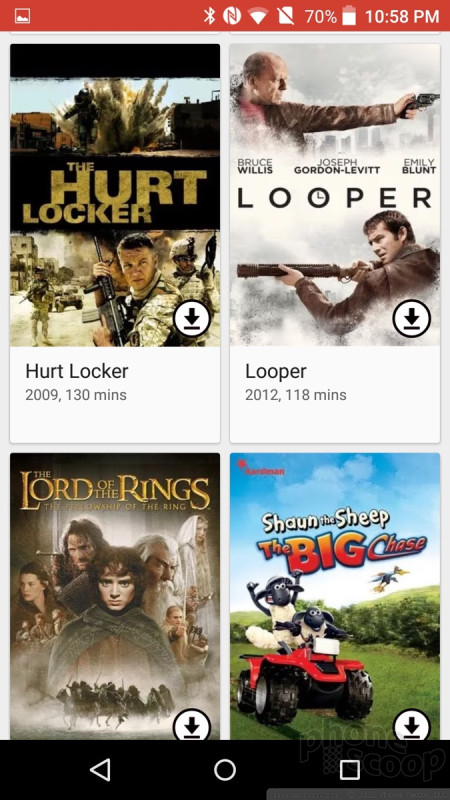




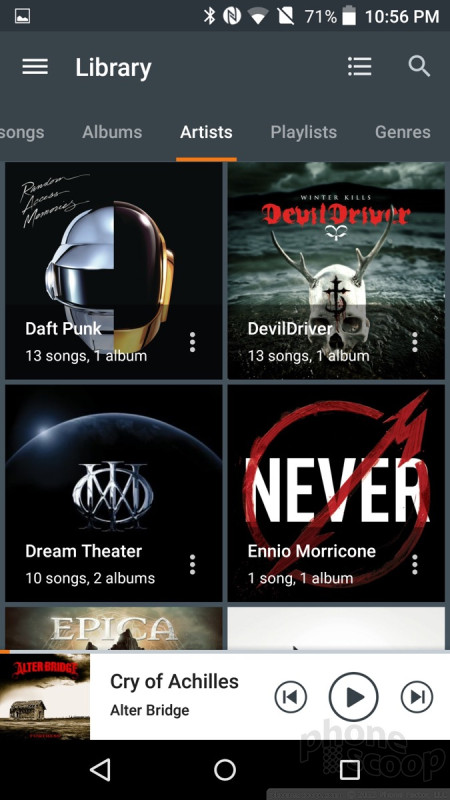




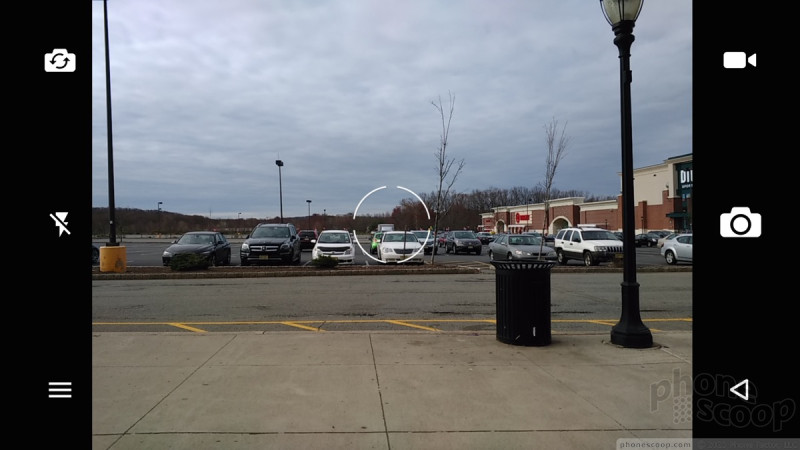





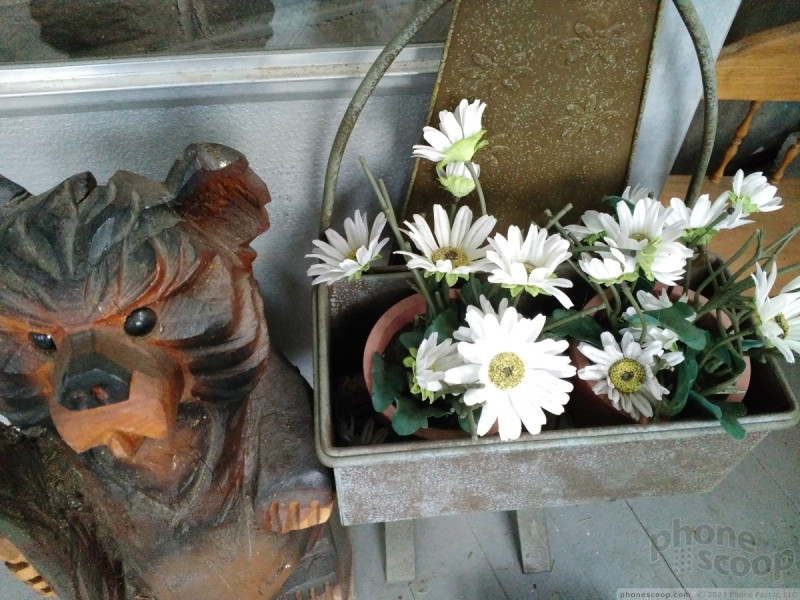













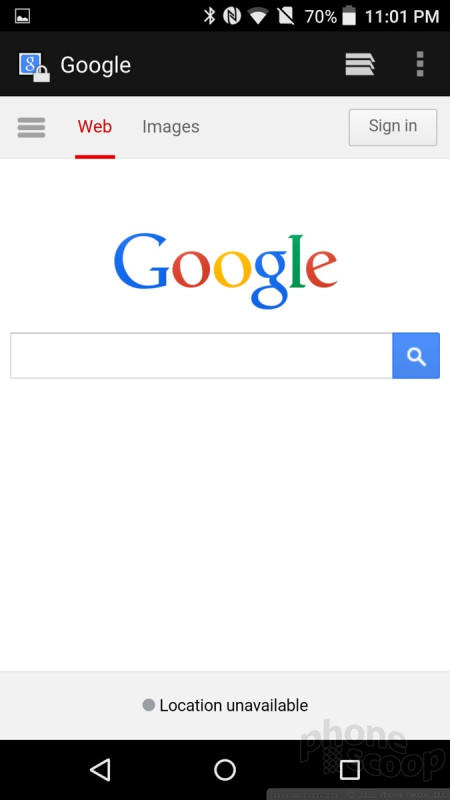




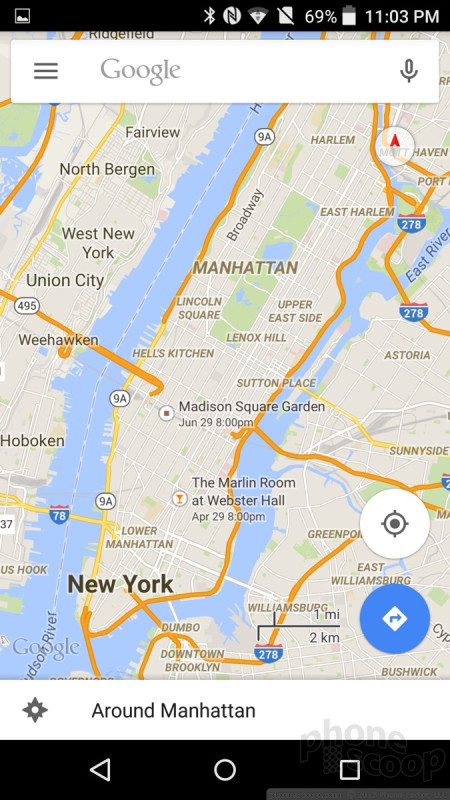


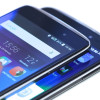 Hands-On: Alcatel OneTouch Idol 3
Hands-On: Alcatel OneTouch Idol 3
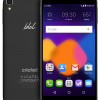 Cricket Wireless to Sell Alcatel OneTouch Idol 3
Cricket Wireless to Sell Alcatel OneTouch Idol 3
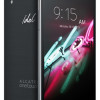 Alcatel Bringing Smaller Idol 3 to US and Canada
Alcatel Bringing Smaller Idol 3 to US and Canada
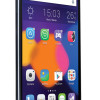 Alcatel's Idol 3 Phablet Ships In May for $249
Alcatel's Idol 3 Phablet Ships In May for $249
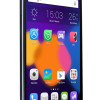 Alcatel OneTouch Aims High with Idol 3 Flagship
Alcatel OneTouch Aims High with Idol 3 Flagship
 Alcatel Idol 3
Alcatel Idol 3



